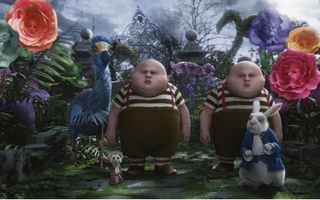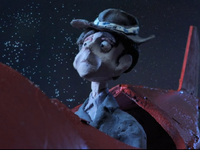It takes 10-20 hours of work to produce 2-3 seconds of animation. For most people, that is an inconceivable amount of time for so small a product. In order to devote themselves fully to their art, many students who wish to create animation professionally choose to enroll in art schools. At Harvard, however, there is a small group of students who pursue animation via a track in the Visual and Environmental Studies Department, balancing their massively time-consuming craft with a liberal arts education.
Though the VES animation teaching staff is small and rotates regularly, VES Professor Ruth S. Lingford has been at Harvard since 2006 as the only permanent faculty member specializing in animation. “The idea of appointing me was to give the discipline of animation more stability, more long-term thinking,” she says.
According to Lingford, most students at Harvard come to animation as beginners and combine the practice with their other courses of study. However, she noted that there are a few students every year who are involved in animation seriously—this year, there are four animation-related theses, the highest number ever.
Before coming to Harvard, Lingford primarily worked with graduate students whose studies were focused on animation. She said that she is constantly impressed by her students’ ability to produce engaging finished work in a very short time, especially considering the typical Harvard student’s heavy courseload.
“The most exciting thing is when [students] realize the potential of animation to do other things, to connect with their passions,” Lingford says.
MOVING PICTURES
When he was 11, Zachary L. Wong ’16 started doing stop-motion animation with Legos. Since then, he has tried a variety of styles, combining both live-action and animation. One of his animations is about a homeless man who dreams of being an airplane pilot.
“More of my recent stuff is very character-based,” Wong says. “I’m very interested in trying to portray things as realistically as possible. I don’t bring in too [many] fantastical elements.”
Creating even short pieces like Wong’s four-to-five minute clip about a homeless man, however, is so labor-intensive that it can be difficult to balance with school work. “Animation is such a tedious and time-consuming process,” Wong says. “During the school year, I usually write and set out the storyboard.” Wong then creates the actual animations during winter and summer break.
While some animators work off an already existing script, Wong fashions his own, generally thinking up the title first. “[The title] serves as the premise, and as soon as I have that, I start animating, and I kind of flesh out the story as I go along,” Wong says, “[It’s] very mercurial…very organic.”
The process of creating an animation also requires an understanding of the many different elements that go into a short clip. Much of Wong’s knowledge is informed by his childhood experimentation. Through stop-motion, Wong learned how to convey mass and gravity. Through painting and drawing, Wong learned how to become a good draftsman. All of these lessons, mixed with an understanding of movement and motion, gave Wong the tools he needs to create his works.
“Animators are the best filmmakers that are out there because on a day-to-day basis, they deal with movement,” Wong says. “If you reduce film to its basic elements, it’s just about capturing movements.”
STYLE AND SUBSTANCE
Pixar and and its parent company Disney are two of the most prominent studios in the field of animation. But while these companies typically produce three-dimensional, hand-drawn, and CGI animation, there are many forms of animation beyond the ones showcased by these studios.
Although she had never done animation before coming to Harvard, Stella Fiorenzoli ’15 always had an interest in art and drawing. After arriving on campus, she decided to enroll in Lingford’s freshman seminar “Animation—Getting Your Hands on Time” and loved both the class and the art of animation.
Read more in Arts
"Man of Tai Chi" The Tao of KeanuRecommended Articles
-
Academy Awards Nominate Alumnus For Animated FilmA former lecturer in Visual and Environmental Studies at Harvard has received an Academy Award nomination for his nine-minute animated
-
Movie Review: RobotsBefore entering the sneak preview screening of Robots—the newest computer-graphic (CG) animated film by Blue Sky Studios (Ice Age) and
-
 A 'Frame by Frame' History
A 'Frame by Frame' History -
Scientific Animation Spurs Artistic Creation“Artists and scientists find each other very exotic—they idealize each other,” says Professor Ruth Lingford. “Artists are in awe of ...
-
 Alice in Wonderland
Alice in Wonderland


















